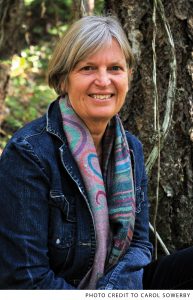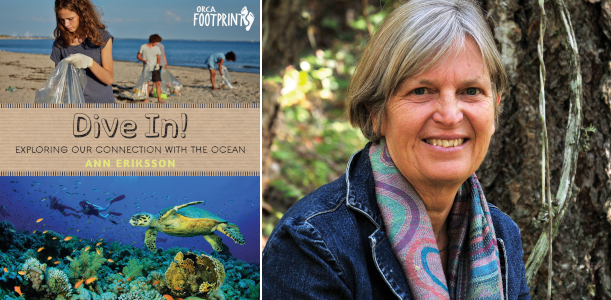We’re all connected to the ocean, and the ocean to us. The ocean provides half the oxygen we breathe; it feeds us, creates our weather and provides us with water. But we haven’t been as kind to the ocean in return. The problems are many: pollution, overfishing, rising seas and acid waters. What can be done? Don’t despair; take action. Dive In! explores our intimate connection with the ocean and provides every reader with an achievable set of actions that can help improve ocean health for our sake and the sake of the millions of marine plants and animals that share the planet with us. Filled with colorful photos and positive stories, Dive In! is as informative as it is inspirational.
What planning or research did you do for your book?
I sought out and read published material (articles, books and web-based material) about the ocean to supplement my scientific knowledge and personal experience in, on and around the ocean.
What excited you about writing on your topic?
Even though I grew up in the Canadian prairies I always felt a deep connection with the ocean. I was excited by the opportunity to convey my passion to children and inform them about the importance of the ocean to humans and how they can help to keep it healthy.
What’s the best surprise you had in the process of writing this book?
That there was a way through the problems the ocean faces to practical solutions. I was stalled at the beginning by the enormity of the issues. Pollution, overfishing, plastic, dead zones, ocean warming and acidification, sea level rise, coral bleaching… I wondered if there would be anything left to help by the time the book was published. But then a conversation with a friend who does eel-grass restoration work made me realize that the current state of the ocean has given us as a species an opportunity to do things in a better way than we have been doing. Even if one child makes a change in their life to help solve ocean problems, the writing of the book with have been worth it.
What types of sources did you use when researching for your book?
Books, articles, web-based resources, personal experience, discussions with other biologists and ocean enthusiasts.
Do you have any unique hobbies or pastimes?
I enjoy any kind of outdoor pursuit but particularly when they happen on, in and around the ocean.
What are some of the challenges of writing nonfiction?
Getting the facts right while at the same time writing an entertaining and absorbing story.
What is the most rewarding part of writing nonfiction?
I’ve been writing fiction most of my writing career. Fiction tends to reach a relatively small audience. I’m hoping that nonfiction will be more broadly read and reach a large number of readers. I would find it very rewarding to know that many children around the world are learning about the ocean and what they can do to help fix some of the problems that we’ve caused.
What types of conversations do you hope will come out of your book?
Wow, isn’t the ocean amazing! What can I do, alone or with others, to keep it that way.
Dive In! is available now.
 Ann Eriksson lives on Thetis Island, British Columbia, with her husband in a waterfront house surrounded by ocean and trees and a lot of amazing and beautiful wildlife. When she’s not writing, working in biology or helping protect the environment, she’s out exploring the ocean and beaches by foot, kayak and sailboat. For more information, visit anneriksson.ca.
Ann Eriksson lives on Thetis Island, British Columbia, with her husband in a waterfront house surrounded by ocean and trees and a lot of amazing and beautiful wildlife. When she’s not writing, working in biology or helping protect the environment, she’s out exploring the ocean and beaches by foot, kayak and sailboat. For more information, visit anneriksson.ca.


